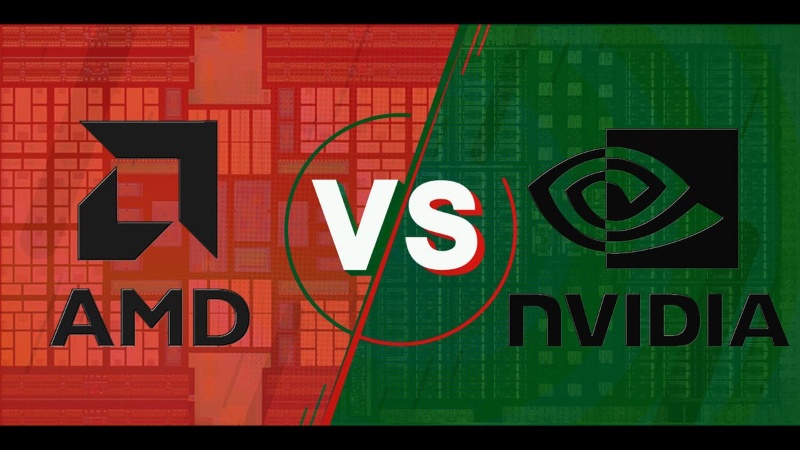1. Introduction
“AMD or NVIDIA? For AI teams, this GPU choice impacts everything from model speed to cloud bills.”
If you’re building AI infrastructure, the GPU debate isn’t theoretical—it’s a make-or-break decision. While AMD’s latest MI300X chips generate buzz, NVIDIA commands 80–95% of the AI market for concrete reasons: unmatched software, proven scalability, and raw performance. But raw hardware is only half the battle. WhaleFlux transforms NVIDIA’s dominance into tangible business outcomes—optimizing clusters of H100, H200, and A100 GPUs to slash cloud costs by 30%+ while accelerating deployments. Let’s dissect the real-world differences.
2. Head-to-Head: AMD vs NVIDIA GPU Comparison
A. Raw Performance (AI Workloads)
NVIDIA:
- H100/H200: Train GPT-4-sized models 2–4x faster than prior generations.
- Specialized AI Cores: Tensor Cores accelerate matrix math (core to LLMs).
- Real-World Edge: 92% of MLPerf benchmarks led by NVIDIA.
AMD:
- MI300X: Competitive specs (192GB HBM3 memory) on paper.
- Adoption Gap: Few large-scale AI deployments validated.
- Verdict: NVIDIA wins on tested performance, not promises.
B. Software & Ecosystem
NVIDIA’s CUDA Dominance:
- 250+ Frameworks: PyTorch, TensorFlow, JAX optimized out-of-the-box.
- Developer Lock-In: 90% of AI codebeds rely on CUDA libraries.
AMD’s ROCm Reality:
- Progress vs Parity: Requires manual tweaks for many tools.
- Community Lag: Limited tutorials/Stack Overflow solutions.
🚫 Rewriting CUDA code for ROCm costs months of engineering time.
C. Cost Efficiency
- AMD’s Pitch: 10–20% cheaper upfront (e.g., MI300X vs H100).
- NVIDIA’s ROI Reality:
Higher Utilization: CUDA optimization = more work per GPU cycle.
WhaleFlux Multiplier: Adds 30%+ efficiency via cluster orchestration.
- True TCO: NVIDIA often cheaper per AI task despite higher sticker prices.
D. Industry Adoption
NVIDIA Everywhere:
- Cloud Giants: AWS (P5), Azure (ND H100 v5), GCP (A3) standardize on NVIDIA.
- Research: 98/100 top AI papers use NVIDIA hardware.
AMD’s Niche:
- Supercomputing Wins: El Capitan, LUMI use MI300A (CPU-GPU hybrid).
- AI Traction: Limited to hyperscaler experiments (e.g., Meta’s RSC).
3. Why NVIDIA Prevails for Enterprise AI
A. CUDA Lock-In = Productivity
- Rewriting 500,000 lines of CUDA for ROCm? That’s $500K+ in dev costs.
- NVIDIA’s moat isn’t just hardware—it’s decades of software investment.
B. Scalability That Works
NVIDIA NVLink:
- 600GB/s speeds between GPUs (critical for 100B+ parameter models).
- WhaleFlux Leverage: Manages NVLink clusters as unified systems.
AMD Infinity Fabric:
- Max 336GB/s—halves inter-GPU bandwidth.
C. Stability Matters
- NVIDIA: Certified drivers for enterprise Linux/CUDA stacks.
- AMD: Frequent reports of ROCm install failures or kernel panics.
⚠️ *Unstable drivers crash 72-hour training jobs—costing more than GPU savings.*
4. Maximizing NVIDIA GPUs with WhaleFlux
A. Intelligent Orchestration
WhaleFlux dynamically allocates workloads across mixed NVIDIA clusters (H100, H200, A100, RTX 4090):
- Routes LLM training to H100s.
- Offloads inference to cost-efficient RTX 4090s.
- Achieves >95% GPU utilization industry-wide.
B. Cost Control
- Problem: Average data center GPUs sit idle 40–60% of the time.
- WhaleFlux Solution:
Consolidates fragmented tasks.
Cuts cloud spend by 30%+ via load balancing.
- Case: NLP startup reduced H100 cluster size by 35% using WhaleFlux.
C. Deployment Flexibility
- Purchase WhaleFlux-managed NVIDIA servers (H100/H200/A100/RTX 4090).
- Lease dedicated GPUs for 1 month minimum—ideal for:
Training sprints.
Production LLM inference.
- No Hourly Billing: Predictable pricing for sustained workloads.
D. Future-Proofing
- WhaleFlux supports new NVIDIA architectures (e.g., Blackwell GB200) on launch day.
- Zero reconfiguration needed for hardware upgrades.
5. When AMD Makes Sense (Spoiler: Rarely for AI)
A. Legit Use Cases
- Gaming: Radeon RX 7900 XTX rivals RTX 4080.
- Budget Workstations: AMD APUs for light CAD/video editing.
- Non-CUDA HPC: Climate modeling on ROCm-optimized supercomputers.
B. AI Exceptions
- Government Mandates: DOE labs requiring vendor diversity.
- Specific Workloads: OpenCL-based physics simulations.
💡 For 95% of AI teams, NVIDIA remains the only practical choice.
6. Key Takeaways
| Factor | NVIDIA | AMD |
| AI Performance | ✅ Industry leader (H100/H200) | ⚠️ Lab benchmarks only |
| Ecosystem | ✅ CUDA = 250+ tools | ❌ ROCm gaps |
| Total Cost | ✅ Higher utilization + WhaleFlux savings | ⚠️ False upfront savings |
| Stability | ✅ Enterprise-grade | ❌ Inconsistent |
WhaleFlux Advantage: *Extracts maximum value from NVIDIA’s AI superiority—delivering 30%+ cost reduction and 50% faster deployments without AMD’s compromises.*
7. Conclusion
For AI, NVIDIA isn’t just “better”—it’s unavoidable. CUDA’s ecosystem lock, NVLink scalability, and proven stability make AMD impractical for serious ML workloads. But hardware alone isn’t enough. WhaleFlux closes the gap between NVIDIA’s potential and your ROI, transforming clusters into streamlined, cost-efficient AI factories. Stop debating GPUs. Start optimizing them.

